How to Make Passive Income

My interest in entrepreneurship originally started as an interest in passive income.
I was in college and read The 4-Hour Workweek and decided that getting paid passively sounded a lot more fun than wearing a suit and going in to PWC every day.
But I didn’t have a good understanding of what passive income really was at the time, and I think most articles and guides to “making passive income” neglect to talk about it in a more honest light.
I’m much less invested in building up my passive income than I was before (for reasons I discuss here), but I still bring in a few thousand dollars a month most months in ways we could reasonably call “passive.”
So for anyone interested in building up a portfolio of passive income to offset or augment their main job income, this post will provide some perspective on how to think about where you decide to focus, and maybe give some ideas for projects worth working on.
I know there’s a lot here, so if you want to skim around, go for it. The last section is the most important one.
If you want to learn a lot more about generating passive income, be sure to check out my course SEO for Solopreneurs .
Passive Sales Machines
Passive income is not a particularly descriptive term. It’s more useful to think of building a “passive sales machine.” Something that can sell something with minimal ongoing work.
There are a few key criteria for a PSM:
- The product must be simple to maintain, otherwise you’ll always be working on it.
- The marketing must be simple to maintain, otherwise you’ll always be selling it.
If it’s not a simple product with a simple sales funnel, you don’t have a PSM, you have a job. So if your goal is to build a steady stream of PSM-based passive income, you need to find things you can sell without having to constantly worry about the product being sold, or how it’s being sold.
That means a Passive Sales Machine is made up of two parts:
- A Passive Product
- A Passive Sales Funnel
Let’s look at both of those in more depth.
Passive Products
If your product requires tons of work to maintain, then it’s not passive.
A services company is not passive since you can’t make money unless you’re providing the service, which requires some time on your part.
An info product like my book notes is passive because even if I never spend another minute on it, it will remain useful and worth buying for quite a while since there would already be ~230 books in it.
A passive product usually has a few key characteristics:
Rapid Scalability. For a product to be passive, it needs to be rapidly scalable without a corresponding increase in your amount of work.
If Growth Machine goes from 10 to 20 clients, our workload doubles. If tomorrow 100,000 more people want to buy Stamena, my workload for it doesn’t change in the slightest. Stamena is rapidly scalable, agency work is not.
Low Customer Support Needs. Even if your product is scalable, it may require a lot of customer support depending on what you’re selling.
This was a big problem with Become a Technical Marketer. The course could sell itself and didn’t need much maintenance, but there was a ton of customer support that ate up my time. But this blog, which makes money from affiliate sales, requires almost no customer service.
This usually means that a Passive Product needs to be inexpensive enough that people don’t expect tons of direct interaction, and also simple enough that customers won’t run into any issues with it.
Considering those constraints, let’s look at some of the best models for creating a Passive Product.
Affiliate Sales
Affiliate sales remain one of the easiest entry points for creating a passive product to generate passive income.
All you need to do is find a product or service you like, find a way to feature that product or service to more people, and then get paid when people buy on your recommendation.
The product in this case is the site or platform you’re using to earn those affiliate sales. One important distinction, though: while a blog or a YouTube channel would definitely be passive products since they have good staying power, something like an Instagram account would not be a passive product since you have to keep creating content to be in people’s feeds.
This site is monetized through well over a dozen different affiliate programs, the simplest being Amazon.
Every time I link to Amazon from an article, Amazon pays me about 5% of whatever you spend on Amazon over the next 24 hours. I do this extremely minimally on the site (compared to actual affiliate sites) and I still made $370 from it between January and March:
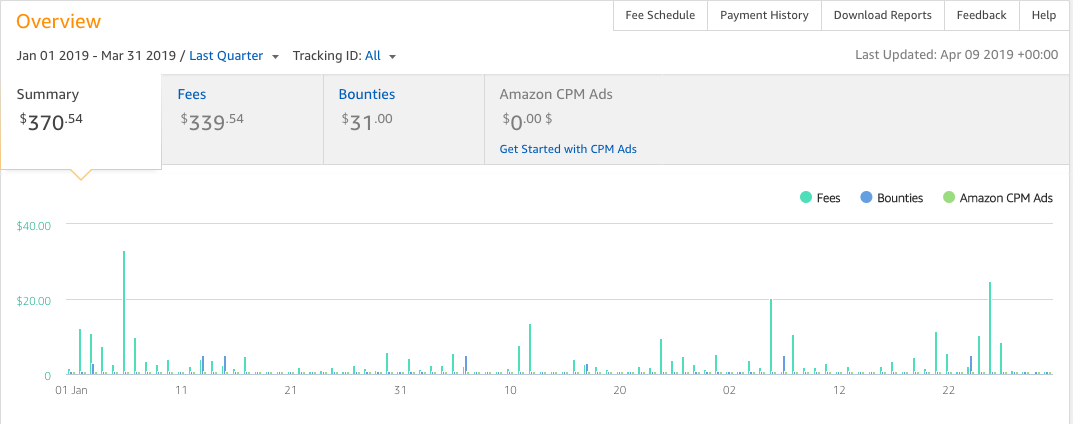
Most of those clicks are coming from my book notes, which rank organically on Google for the title of the book they’re taken from. So the PSM here is:
Step 1 : Someone Googles a book title like “48 Laws of Power” and clicks on the link to my site
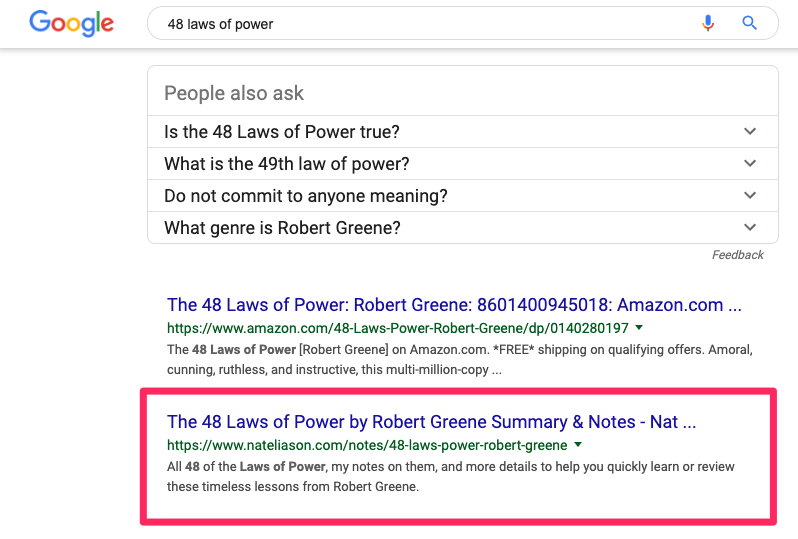
Step 2 : They get to my site and click on “Read More on Amazon”
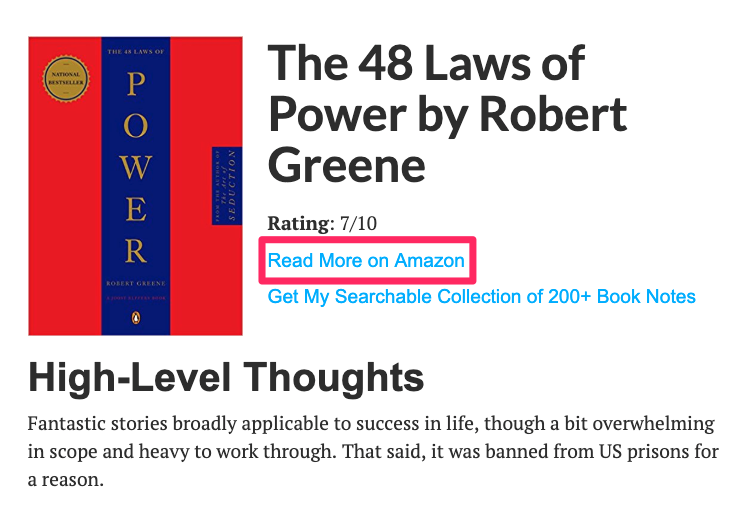
Step 3 : Amazon gives me a cut of whatever they spend in the next 24 hours.
Is this product easy to maintain? Yes, since once the book notes are posted, I basically never have to touch them again.
Is this product rapidly scalable? Yes, since whether I get 1,000 or 1,000,000 visitors my work is the same. Revenue can go up with no additional work on my part.
Does this product have low customer support needs? Yes, I get a few emails a week mostly from people wanting to talk about things in articles, which I like doing anyway.
This isn’t even an amazing example of building an affiliate income based Passive Product though. If you want to build an interesting PSM through affiliate income, you need to be pushing a product that pays out well.
For example, the site GigWorker gets a commission whenever someone signs up for Uber through Uber referral page.
Someone reading their “Uber referral code” article is pretty motivated to sign up for Uber, and Uber is definitely paying them better than the few cents I get from Amazon.
Or for another example, the site Atlas Coffee Club sells a coffee subscription service, but then they also have guides to brewing coffee where they earn affiliate revenue from recommending products they don’t sell themselves, like espresso makers and coffee grinders.
Again, anyone reading that page is highly motivated to make a purchase, and the products they’re recommending are expensive, making the site’s payoff much higher.
Information Products
Information products, or “info products,” are the most common product-type monetization you’ll come across in the passive income world. An info product is basically just a piece of information that you sell instead of giving away for free.
My book notes are a good example of an info product, as is Growth Machine’s content marketing course. There are really only a few kinds of info products out there:
- Books / White Papers
- Courses
- Information Repositories
The big benefit of info products is that they’re extremely easy to fulfill when someone orders them. It takes me zero work to give you my book notes when you buy them, but if people are buying tea, someone has to keep putting that tea in the warehouse.
The big downside of info products is that they’re usually easily outdated, and can be difficult to sell without a huge initial investment in building the authority you need to sell them. No one cares who they’re buying tea from, but if you’re going to drop $50 on someone’s book notes, I need to prove to you that I’m a somewhat mentally functional person first.
Where info products are particularly interesting to me now is in monetizing my byproducts. Book notes are things I would be creating anyway, so it’s no extra work to sell access to them. The Growth Machine course was originally made for internal training, so we would have made it anyway.
So if you have the opportunity to sell some exclusive piece of information (especially along the lines of a “how to” guide), you may as well.
Also if you want to learn how to start an info product, I made a video on validating & launching my Effortless Output course which made over $400,000 in 9 months:
Technology Products
Tech products are usually a bad fit for passive income, but there are cases where you can make it work.
The commonly overlooked version of this is creating very simple web or mobile apps. KLib, for example, is a Mac app for extracting Kindle highlights I was using before I discovered Readwise. KLib wasn’t often updated, but you had to pay a couple dollars a month for it, so I suspect they were making a nice steady stream of passive income from it.
For me, Stamena is the big example of this. Since launching it in Spring 2016 it has mostly sat in the app store with no more than a couple hours of work per year on my part, and it has earned $154k in that time:
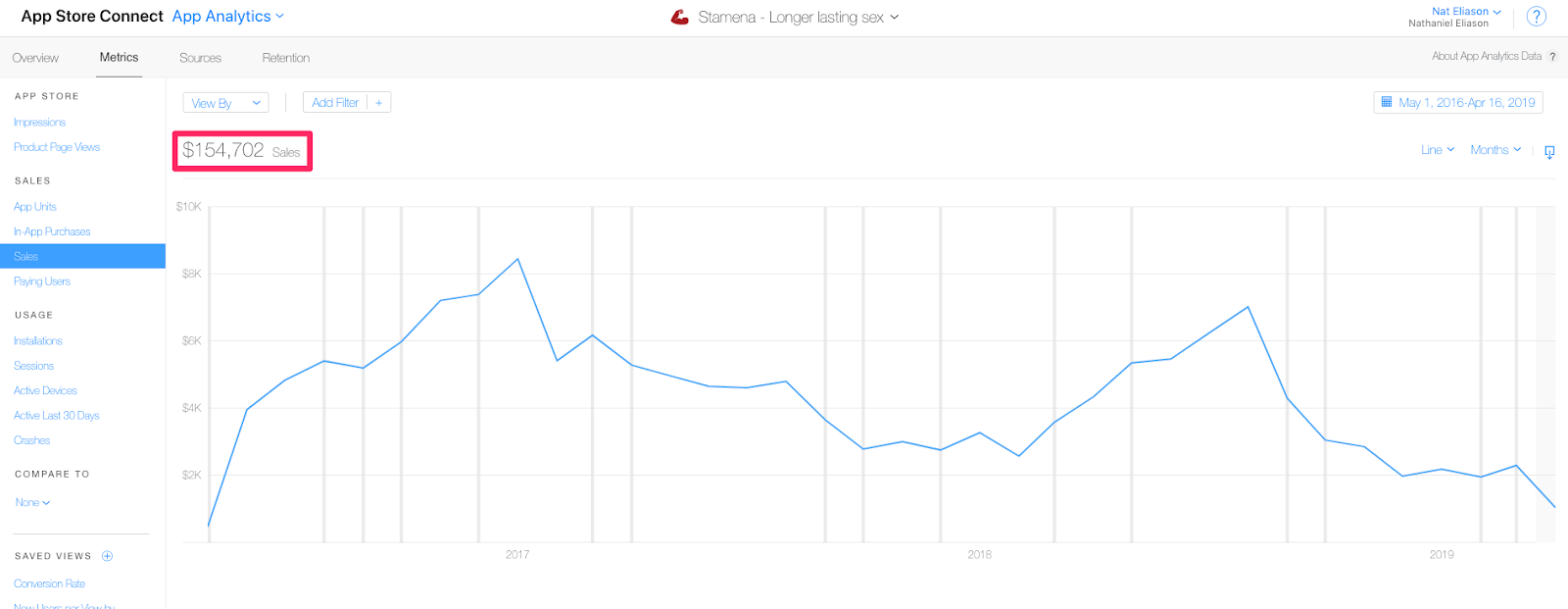
If you want to create this kind of a Passive Product, you need to find a small, niche problem you can solve, in a way that people will pay for it. The big hurdle with apps is that people don’t want to pay for them, so you need to find a pain strong enough that people will be willing to give you at least a few dollars for the convenience of using your tool.
But then that has to be balanced with the tool not requiring tons of work or updates, and requiring minimal customer service. Plus unless you’re a developer yourself, you’ll need to pay someone to build the thing for you, and that can get pretty expensive.
I know those Stamena numbers are really sexy, but this is a super hard area to pull off passive income and I generally don’t recommend it. But if you can find a good niche to do it in, though, more power to you.
Physical Products
Physical products are the third actual-product kind of Passive Product you can sell. This is usually through some form of dropshipping and Amazon FBA, where you can set up a product for sale on Amazon and then send it straight from the manufacturer to the Amazon warehouses, let Amazon fulfill the orders for you, and sit back and cash checks.
Obviously it’s not as easy as that sounds, and since this isn’t something I’ve ever done, I’m not very qualified to talk about it. What I can say though is that most people spending hundreds or thousands of dollars on setting this up are not making any money, and the only time I’d consider it is if I had built in the marketing channel first.
There’s an insane amount of competition on Amazon, partially because these kinds of passive income techniques are so attractive, and you can’t assume that you’ll make money just because you have a product for sale.
If I were going to do it, I’d probably try to find an easily fulfilled product I can sell through one of my articles, like by dropshipping the materials needed for brewing Kombucha and linking to those items from my article on making kombucha.
You can also do it outside of Amazon, though. Cup & Leaf gets a good amount of traffic now, and if we wanted to convert it to a passive income product site we could definitely do that and it’d cash flow a nice amount of money per month. But, it’s not a great Passive Product since we’d need to pay someone to keep restocking the tea, and there’s a decent amount of customer service that goes into it.
Attention Products
An attention product is anything monetized by, you guessed it, your attention. Blogs with ads are the classic example of this. If you don’t have a good product or affiliate program to push in your articles, then your next best option is to use ads.
This is the primary way that Nora, who runs our client projects at Growth Machine, has monetized her blog A Clean Bake. She talked about it more in-depth in this post here, but she gets a great CPM for her site: $18-20 per 1,000 visitors. At that rate, if I ran ads on this blog it’d be making between $6,000 and $10,000 per month, again with almost no ongoing maintenance.
Another way you can monetize attention is through paid-access platforms like Medium. I repost my articles on Medium behind their paywall so they can share them with their readers, and with a couple articles going viral over the last year, I’ve made just shy of $10k:
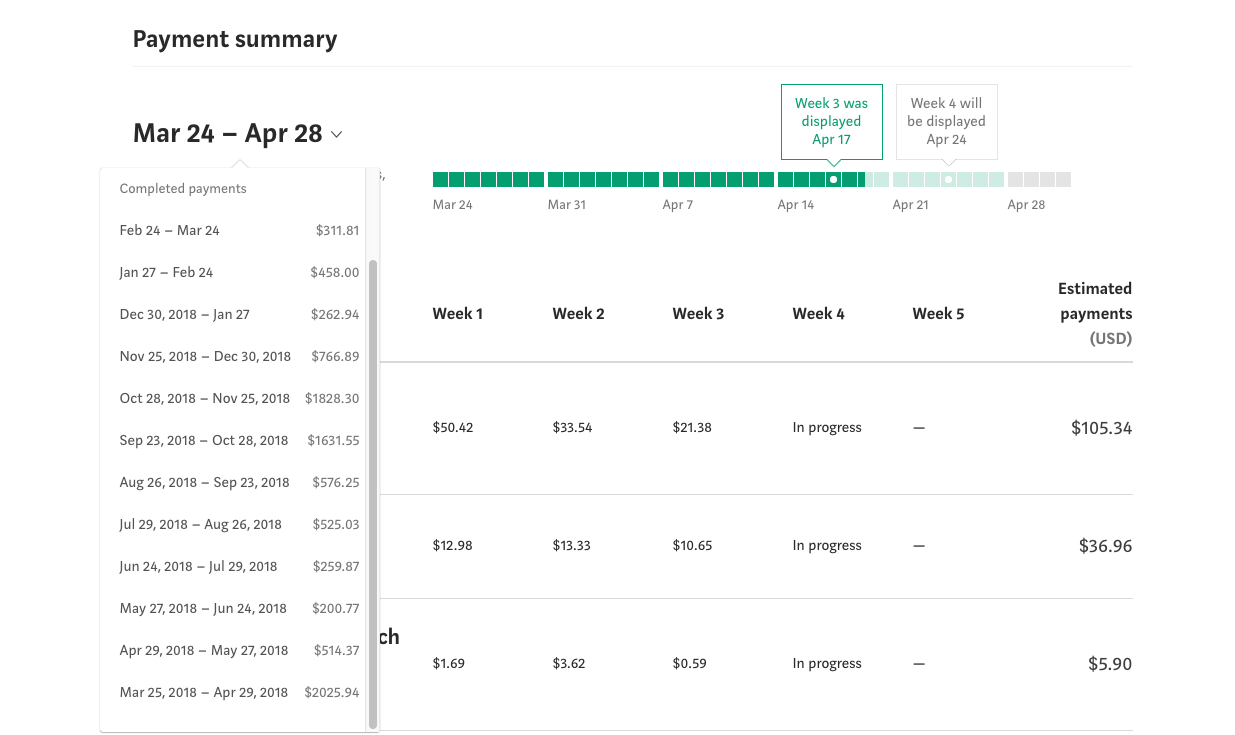
The big challenge with attention products is that getting attention is hard, keeping it is hard, and you’re overly concentrated in your reliance on traffic to be your source of revenue.
If you get hit with a Google update like many health sites were last year, you might see your revenue drop 50% overnight. Not a fun risk to be exposed to.
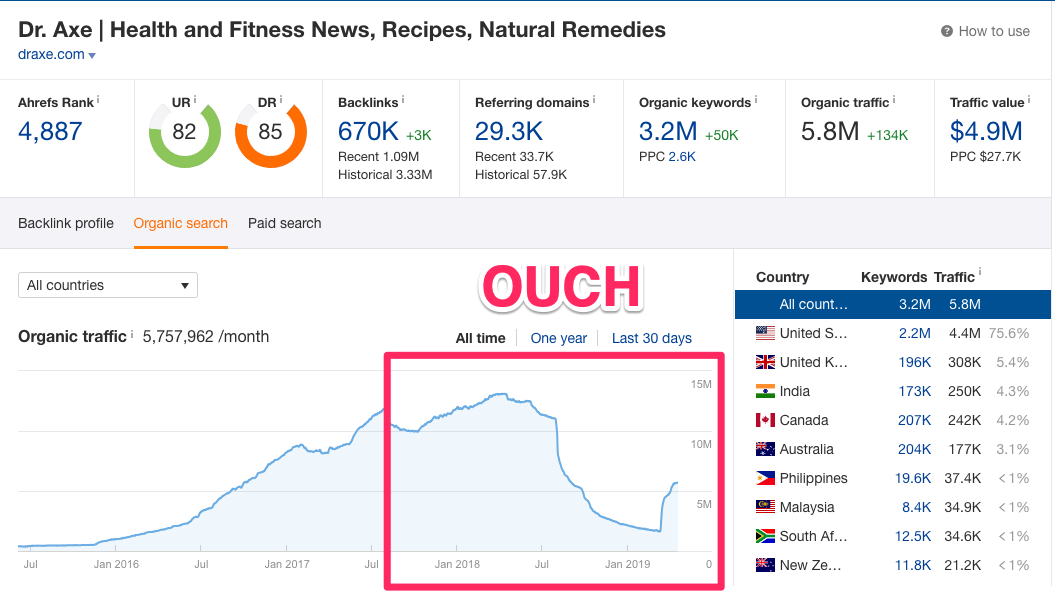
But, on the flip side, attention products require almost no extra work beyond the things you’re doing to get the attention. If you want to sell an info product on your blog, you need to make the product. If you want to sell ads, it takes maybe 10 minutes to get Google Ads set up.
One thing I will say: if you want to make an attention product, you should almost certainly be using SEO to get eyeballs on your content. If your old content isn’t constantly bringing in new readers, you’re never going to be able to grow the total amount of traffic you’re getting, and you won’t be able to grow your ad revenue.
Also, SEO lets you not publish anything for a while but still make money, which is essential if you want real passive income.
Creating a Passive Product
Obviously we’ve only covered the kinds of products you could create, making them is the real challenge.
Whatever route you decide to go down, understand that it will take a while to build something truly self-sustaining. It might take a year or more to get it figured out to the point where it’s making you money instead of costing you money, so don’t be fooled by the hype that you can easily make passive income right now.
And even once you’ve done that, creating the passive product is only half of the battle. You also need to figure out a passive sales funnel.
Passive Sales Funnels
A passive sales funnel is any way of continuing to sell your passive product with zero, or minimal, ongoing work.
It needs to fit a few criteria:
Low cost of maintenance. A good Passive Sales Funnel is cheap or free to maintain. SEO traffic is essentially free, which makes it great as a PSF. Paying a team of sales people is not cheap nor easy to maintain, so it’s a bad fit.
Long term stability. Something easy to maintain but fleeting isn’t very passive. This is why highly ephemeral social networks like Instagram aren’t really sources of passive income. If you stop posting on Instagram, you stop getting sales.
First purchase profitability. Bigger product companies can afford to lose money on their first sale if they have great life time value for their customers. But a PSF needs to be efficient enough that you make a margin on the first sale, since you’re unlikely to do the customer nurturing necessary for ongoing sales.
Customer self-qualification. Basically, if you need to respond to emails and answer questions before someone buys, your sales funnel is not passive. This typically means your product needs to be inexpensive, or if it’s expensive, that you provide a ton of information about it to help your customers sell themselves.
Here a few of the best channels you can use for making these Passive Sales Funnels.
Search Engine Optimization (SEO)
SEO is the process of getting your content to the top of Google without paying for ads, usually by providing the best answer on the Internet for someone’s search query.
It is one of the best ways to generate passive sales since once you get good at it, you can get traffic and turn that traffic into sales with minimal ongoing work.
Remember the Stamena sales graph up above? Despite it frequently being in the top 100 health and fitness apps, most of the sales actually come from this site.
Guys search something like “kegel exercises for men,” end up on this site, and then the article has a big call to action sending them to the app store.
People click the image, buy the app, and Apple deposits my proceeds into my bank account each month. I did zero work to sell each additional person once those pages were written, and they’ve continued to make sales for the past three years.
This is also how Cup & Leaf primarily makes sales. People search a query like “best oolong tea,” see our article, click on it, and then in the article it directs them to go to our store to buy the teas.
Side note, building SEO-based passive sales for companies like this is what my agency Growth Machine does, if you’re in the market for help with this.
It works extremely well when you have a product that can be the solution to the problem someone is searching about, so long as you’re creating articles with sufficiently high purchase intent queries and making a strong call to action to buy from you (more on this here).
There are, of course, downsides with SEO. It’s extremely slow to get started, for one. You might invest months into creating a blog like Cup & Leaf only to be unsuccessful.
It’s also not always clear that organic traffic will turn into sales. Many people just wanted to read something and have no intent to buy anything.
But if you can find a search query that people are using to inform a purchase, get your site ranked for it, then send that traffic to a product, you have one of the best Passive Sales Funnels there is.
Platform Piggybacking
Another way you can generate passive sales is by piggybacking your product onto a larger platform people use to make purchase decisions.
Ryan Kulp comes to mind as a good example of someone who takes advantage of this. He uses the Shopify app store to generate sales for his tools like Fomo, without having to continually market them through ads or other means.
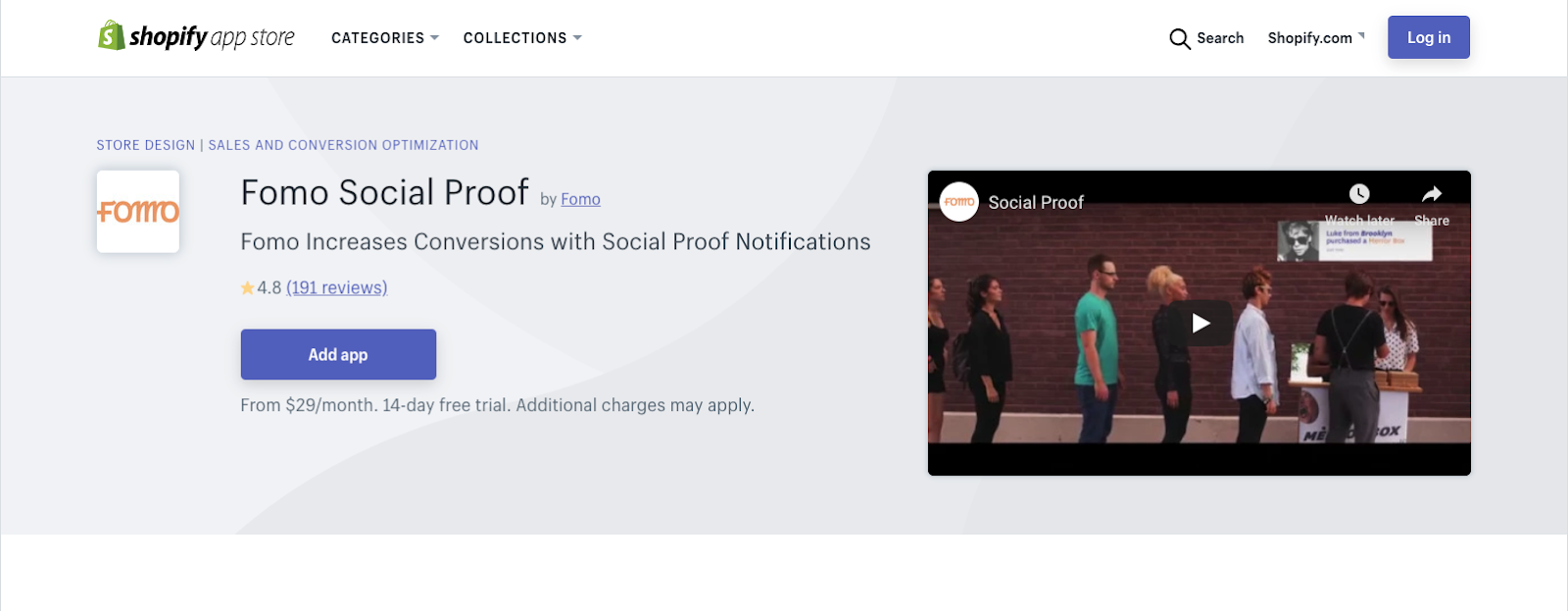
This was also the way that many games and other apps made a ton of money in the earlier days of Facebook, by piggybacking on the old Facebook App store to send you notifications that your friends were playing Farmville.
The best platforms to do this on right now seem to be:
- Shopify App Store
- Amazon FBA
- Chrome App Store
- iPhone App Store
Make a product people will pay for, get it ranked well for the relevant queries within your platform, and let it passively sell itself.
Free Resources
Free resources can be their own passive sales channel, or they can fit into another one, but they’re a great way to acquire sales, especially if you’re trying to passively sell something higher priced.
The classic example of this is an email course. For Growth Machine, we have a free 7-day email course on SEO and content marketing that ends in an upsell for our paid course. We call it out in our articles and podcast to drive traffic to it, then when people go through it, some percentage of them end up buying the full paid course at the end.
Many creatives (and pornographers) use this kind of passive sales funnel as well. Offer up some of your content for free, then make people pay to get the best or highest quality stuff. The more free stuff you create, the more entry points you have for people to end up finding your paid stuff.
This does tend to need to be part of another passive sales funnel, though. You might need SEO for people to find your free course. Or you might need to piggyback off some platform for people to find your free material.
But whether you do it on your own or as part of a bigger passive sales funnel, free resources are a great way to generate passive sales.
Affiliates
The final big way to generate passive sales is through partnerships or affiliate deals with other companies who can sell your product for you.
If you have a skincare / health product like Fancy Formulas, you can find bloggers, YouTubers, Instagram influencers, and anyone else in the skincare and health niche whose audience would enjoy your product and offer them an affiliate commission for any sales they make.
Influencers are usually looking for good affiliate deals like this to fit into their content, especially if they talk about a wide variety of topics, so it’s an easy pitch. And once you have someone in your affiliate program, they can generate perpetual ongoing sales for you without you having to do much more work besides maintain the relationship.
It’s easy to set up, too. Tools like Refersion can get you up and running with an affiliate program on Shopify in a few minutes. The hard part is getting good affiliates to promote your products.
Putting it All Together
If your goal is to make passive income, then there are two ways you can put this information to use:
The Product First Approach
First: Find a passive product you can sell.
It needs to be something that will take an initial amount of effort to set up, but then require minimal ongoing maintenance, customer service, and updates.
Second: Find a passive sales channel you can plug it into.
It needs a way it can self-generate sales without you having to do a ton of ongoing sales and marketing work.
This product-first method can get you to passive income the fastest, but it’s also riskier, since you might invest a ton of resources into building a product before you have any idea if people want it.
That’s why I personally prefer…
The Funnel First Approach
First: Find a sales funnel you can build without a product.
Figure out how you can build something that sells other people’s stuff (usually through affiliate sales) so you can start generating some passive income before creating a product of your own.
The best way to do that is usually through building influence on a platform like this blog or a YouTube channel. You start by building up your audience and initially monetize it through affiliate sales or advertising.
Second: Substitute in your own products.
It’s much safer to invest in getting a product made if you already have the sales funnel in place.
I didn’t make Stamena until I saw how much traffic my articles were sending to the app store for someone else’s app. The Growth Machine course came as a consequence of sites reaching out for help but not having enough budget.
When you already know you have a stream of people asking for a product, making that product gets much less risky.
This logic is probably why so much passive income advice comes out to some form of “start a blog!” That’s not terrible advice, but most blogs don’t make money. The better advice would be “start a blog that talks about things people will pay for.”
That’s what’s worked well for me, anyway.
But Should You Try to Make Passive Income?
As I was working on this piece, I realized there was a broader discussion to have about whether or not you should try to make passive income in the first place.
About four years ago when I was working on Programming for Marketers, I met Ankur, the founder of Teachable. Teachable was a very small company then, and I asked him if he wanted to grow it into something big, or just set it up as a source of passive income for him and his co-founder.
His response stuck with me. He said it takes about the same amount of time and energy to build a million dollar business as to build a lifestyle business.
You could spend a year creating something that employs other people and has a ton of growth potential, or you could spend a year making something that kicks off $5,000 a month.
Today, Teachable has ~64 employees and is worth over $100M. All of the passive income stuff I was working on then, besides this blog, is long gone. And this blog isn’t quite worth $100M yet.
Passive income is great, but consider what your real goal is. You don’t want to sit on a beach sipping margaritas. Believe me, if you’re the kind of person who can pull that kind of passive income off, you’ll never be happy not doing some kind of work.
Your real goal is probably more along the lines of working on something you care about and not having to worry about money. And if you want to do that, you may as well build something that can last, instead of something you can immediately put on autopilot.
At the end of The 4-Hour Workweek, Tim Ferriss has a whole chapter about “filling the void” of existential dread once you remove work. I’ve been in that void. It’s not fun, and I think there’s a better way to avoid it than flying to Argentina to take tango lessons.
The best way to avoid the void is to work on something you enjoy working on, that you can continue to enjoy working on. To treat work as an infinite, not finite, game.
Passive income is based on the faulty assumption that once you hit a goal, you’ll be happy and satisfied and can go on with your happy life. But as pretty much anyone who has ever gotten something they want knows, that’s not really how it works.
“...you attain the goal and realize the shocking realization that attaining the goal does not complete or redeem you, does not make everything for your life “OK ” as you are, in the culture, educated to assume it will do this, the goal. And then you face this fact that what you had thought would have the meaning does not have the meaning when you get it, and you are impaled by shock.” -- Infinite Jest, David Foster Wallace
What I’ve realized from the last five years of chasing both passive income and entrepreneurship is that building a real business is much, much more satisfying.
It constantly provides new challenges for you to grapple with, in the quasi-masochistic yet satisfying way that anyone who rises to any level of success gets off on.
When you see opportunities to make some passive income from things you’re mostly doing anyway, do it. But purely pursuing passive income isn’t a great route to happiness.
Maybe that’s a lesson you need to learn yourself, though.
If you want to learn a lot more about generating passive income, be sure to check out my course SEO for Solopreneurs .

